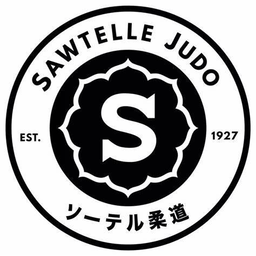Judo Kata (Katas-from the Kodokan website)
There are two principal ways of practicing Judo: Kata and Randori. Kata, which literally means “form,” is practiced following a formal system of prearranged exercise, while Randori, meaning “free exercise” is practiced freely. Kata of Judo is the best way of defense and attack in various cases, being theoretically systematized.
In the Kodokan, the following are the eight main Katas adopted.
Nage-no-kata (投の形?) (Forms of throwing)
Nage-no-kata is a throwing kata in Judo. The kata is composed of 3 techniques from each of the five throw groups in Judo: hand techniques (te waza), hip techniques (goshi waza), foot techniques (ashi waza), rear sacrifice techniques (ma sutemi waza) and side sacrifice techniques (yoko sutemi waza). Each of these 15 techniques is performed twice in the specified order, once with kumi-kata (grip style) to the right and once to the left. Demonstration of this kata as tori is often included in tests for the shodan rank. The role of uke requires being thrown 30 times and is traditionally filled by the more senior partner. (Nage no kata-Wikipedia)
The kata was developed by Jigoro Kano in 1887 in the Kodokan school.
Nage No Kata teaching video
Katame-no-kata (固の形) (Forms of grappling or holding)
Katame-no-kata is a kata (a set of prearranged techniques) in Judo.
It consists of fifteen techniques, grouped in three categories: Osae-komi-waza (holding techniques), Shime-waza (choking techniques), and Kansetsu-waza (joint-locking techniques). (Katame no kata-Wikipedia)
Katame No Kata teaching video (Part 1 of 3) (Osaekomi-waza/hold-down techniques)
Katame No Kata teaching video (Part 2 of 3) (Shime-waza/choking techniques)
Katame No Kata teaching video (Part 3 of 3) (Kansetsu-waza/joint locks techniques)
Kime-no-kata (極の形?) (Forms of decision)
Kime-no-kata is a self-defense oriented series of katas in Judo. Kime no kata, also known as Shinken Shobu no Kata (真剣勝負の形?, “the kata of real fighting”), was developed at the Kodokan around 1888. The series is composed of 8 techniques from a kneeling posture (idori waza), and 12 techniques from a standing position (tachi waza). Both sets of techniques contain defenses for both armed and empty-handed attacks. (Kime no kata-Wikipedia)
Kime-no-kata video (in Japanese)
Ju-no-kata (柔の形), (Forms of gentleness)
Ju-no-kata is a kata (a set of prearranged forms) in Judo.
It is designed to teach the fundamental principles of Judo, especially the principle of ju (yielding or gentleness). It consists in three sets of techniques. (Ju no kata-Wikipedia)
Kodokan Goshin Jutsu (Forms of Kodokan self-defense)
Kodokan Goshin Jutsu is a set of prearranged self-defence forms in Judo.
It is the most recent kata of Judo, having been created in 1956. It incorporates techniques from aikido through the influence of Kenji Tomiki. It consists of several techniques to defend oneself from: unarmed attack, attack with a dagger, with a stick, and with a gun. (Kodokan Goshin Jutsu-Wikipedia)
Goshin Jutsu teaching video (Part 1 of 2)
Goshin Jutsu teaching video (Part 1 of 2)
Itsutsu no Kata (五の形) (Forms of five) is a kata (a set of prearranged techniques) in Judo.
It consists in five techniques, known only by their number. It was developed by Jigoro Kano and it is considered unfinished. The techniques are composed of gentle movements evocative of natural forces.
Itsutsu no kata teaching video with Mifune
Koshiki-no-kata (古式の形) (Forms of antiquity)
Koshiki-no-kata is a kata (a set of prearranged techniques) in Judo.
It is also known as Kito-ryu no Kata. It consists of 21 techniques originally belonging to the Kito School of jujutsu. Jigoro Kano revised the techniques and incorporated them into a kata to preserve the historical source of Judo.
Although koshiki-no-kata is not often seen in the United States, it is still taught and practiced in Japan. Some striking demonstrations of it from the 1950s can be seen in the film “Classic Judo Kata,” by Hal Sharp. If the description of the kata in that film is correct, it would be the only Judo kata that involves attacking the cervical spine. (Koshiki no kata-Wikipedia)
Koshiki-no-kata video with Kano (in Japanese)
Seiryoku Zen’yo Kokumin Taiiku no Kata (Forms of Maximum Efficiency National Physical Education)
Seiryoku Zen’yo Kokumin Taiiku no Kata (Maximum-Efficiency National Physical Education Kata) is a set of physical exercises that are part of Judo.
Its purpose is to promote the development of strong, healthy minds and bodies in an interesting and useful way. It consists of two groups of exercises, one to be practiced alone, the other with a partner. (Seiryoku Zen’yo Kokumin Taiiku no Kata-Wikipedia)
Seiryoku Zen’yo Kokumin Taiiku no Kata demonstration video
Other non-official Kodokan Judo katas
Video from JudoInfo website (Go no sen no kata-Wikipedia)
Kaeshi no kata is a Judo kata that focuses on counter-attacks and throwing techniques like the Go no sen no kata. It is an older form than Go no sen no kata and was passed onto Masutaro Otani from Yukio Tani. It is not an officially recognized Kodokan kata.[1]
The kata exists in two forms with minor variations in order and technique. (Kaeshi no kata-Wikipedia)
Nage ura no kata is a Judo kata that, like the Go no sen no kata and Kaeshi no kata, focuses on counter-attacks to throwing techniques. It was developed by Kyuzo Mifune,[1] and is not an officially recognized Kodokan kata. (Nage ura no kata-Wikipedia)
Kodokan
Where Judo started and where it is now.

Eishoji in Inari-machi, Shitaya, Tokyo, circa 1882

1st Kodokan building, Koji-machi, Tokyo, circa 1883.

Kodokan logo

Modern Kodokan, circa 1984 Bunkyo-ku (ward), Tokyo
In the next part, we will dive into the beginnings of Sawtelle Judo Dojo, our founder, the original Dojo, its history, and some of the instructors from the day.


Leave a Reply